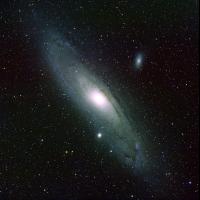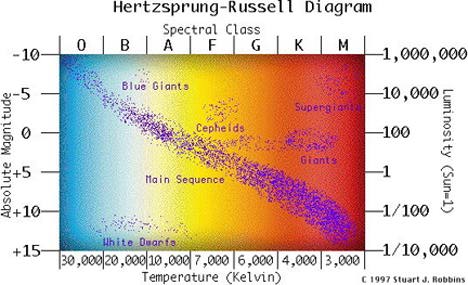MAIN TYPES OF GALAXIES
Spiral galaxies (ex. Milky Way,
Andromeda) –
consist of a central nuclear bulge and arched spiral arms
of stars that trail beyond the galaxy.
Barred spiral galaxies (ex. )
similar to spiral galaxies, although these have a bar of
stars crossing the bulge.
Elliptical galaxies (ex. )
elliptical or round in shape and contain no arms of
stars. Most of these consist mostly of low mass, long
life stars.
Interaction between galaxies may
change the structure of them. This is believed to be the
theory of how lenticular
(disk shaped) and irregular (ex. Large Molecular Cloud) galaxies formed.
|
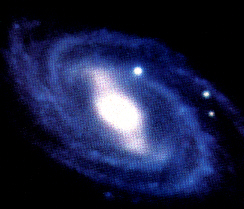
This is the spiral galaxy NGC-3992, in the star
constellation of URSA MAJOR. Patchy areas of bright blue
stars trace out the loose spiral to help natural forces
determine its shape. Global clusters, as well as
indiviual stars and planets, owe their impressive
spherical symmetry to gravity's relentless inward pull.
Spiral galxies rank among the most striking forms because
of their estravagant shapes and variations.
|
TYPES OF STARS
Main sequence stars - stars burning or fusing
hydrogen into helium in their core (90% of stars
in solar system)
Giants (includes red
giants) and Supergiants - large and hence more
luminous stars.(-1% of stars in solar system)
White Dwarfs - small hot stars at their
end stages, like our sun (remnants of supernovas,
about 9% of stars in solar system)
|
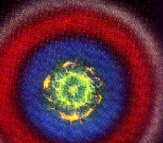
This is said to be the
hellish interior of an exploding star, scientists can
learn a great deal about about how stars evolve by
studying the supernova. As it explodes, it suddenly
increases in brightness, by a factor of billons and after
a few weeks fades out, to wane amongst its neighboring
stars. It may be blacked out but can remain years after
the blast, until it's nothing but a dim white dwarf.
|
TOTAL
ECLIPSE
Suddenly it's there! Eyes open. Masks off.
It's there!Amazingly unreal at first,
Then intense. An overwhelming presence
Of nature looms just above us,
We can almost touch it.
A
transitory spectacle unparalleled.
Streamers of irregular blue-whiteness
Radiate from the pure black disk.
That was our moon. A halo radiating power
That fills us with awe.
How the
ancients must have
Prostated themselves in fear
And worshipped the god that could create
This miracle. And for centuries after
We followed, and forgot the cause.
Now we see
it too.
Cameras whirr and click.
And se see Venus, Saturn, Aldebaran, Rigel.
"A total physical and emotional experience."
Midway up the sky. Suspended. so close
You can almost feel it spreading
Everywhere. The dust haze helps to fill
The heavens with softness.
You are in
the cathdral of the skies
And can understand main's attempt
To complete with nature, with flying arches,
Vaulted ceilings, and illuminated sculpture
Radiating down on us or His flock,
All part of man's efforts to cope
With the enormity of a solar eclipse,
Which visits at unexpected intervals
Over so many thousands of years.
We are all
sun worshippers now,
Gathered to witness and to marvel,
.Drawn by habit or by hearsay.
The minutes
hurtle by,
To bring us to the brilliant burst
That shutters the unsuspecting soul.
A diamond
of unequaled beauty
Pours forth its radiance with
Splendor that pierces the atmosphere.
An intense emanation that roars out
From the sun in silence so total
That it chills the spine.
It grows.
And grows. And finally
The masterpiece is destroyed
As the sun illuminates us once more.
And the mystical corona returns
To its corner where we cannot see it,
Only be aware of its calming presence
As life goes on.
And now the
memory lingers. The corona
Suspended forever in our minds,
Midway up the sky.
Everyone
hastily comparing notes.
In awe. It was worthwhile, wasn't it?
Touch and go for a while, wasn't it?
Sun burnt the clouds away, didn't it?
Tape
recorders, rewound, replayed
To live a little.
We cannot always trust our memories
We need those enormites.
We need those photos.
And tapes. And slides. And movies.
How else can we be sure it is was real?
-GERRIT
VERSCHUR,1973.
|
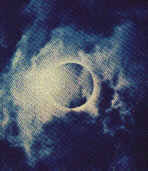 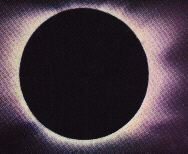 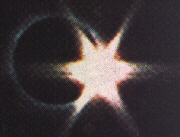
An elcipse is observed when a celestial body seems to
move in front of another. The MOON is eclipsed when the
Earth casts its shadow on it. The Galilean satellites of
Jupiter eclipse one another. Some close BINARY STARS are
eclipsing binaries. The word eclipse is a general one;
when the Moon moves in front of a star, however, the
event is called an OCCULTATION, and when Mercury or Venus
moves between the Earth and the Sun, the event is called
a TRANSIT. Eclipses of the Sun and Moon have long made a
deep impression on humankind. The blotting out of light
from a familiar and apparently predictable source was
generally considered a bad omen. Predicting eclipses was
one of the duties of ancient Chinese astronomers, who
labored under the threat of death if they failed. Today
eclipses can be predicted to within seconds./
No photograph can capture all the visual sensations,
experienced during totality of the elipse, but
photographers use very special lenses and tricks to
capture as many as they can. An eclipse of the moon can
only be total, or partial, not annular.These pictures
range from the "fisheye view" of the entire
sky, to the close up view of the inner corona and
chromosphere. In the first picture, the light clouds
obsutruct the eclipse for a few seconds, as the
photographer (Carl Koppeschaar) uses a 300mm f/4 lens for
the 1/30 second exposure w/ Kodak photomicrography color
film 2483. In the second, a special astronmers gradient
filter was used to show the corona as obserbed in our
naked eyes. The final picture, shows the six point jewel
that the photgrapher was able to capture w/ a hexagonal
f/stop diaphragm in thier 35-mm camera, in Massachusetts.
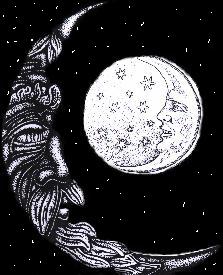
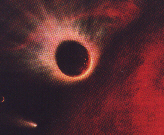
Astronimical
artist Pamela Lee, (not the Baywatch girl), shows here a
planet, with an orbit of that like Earth, that is about
to be swallowed by the sun, the expading giant red star,
with an intense heat that could boil the planets oceans
and blow its atmosphere out like a comet's tail. Soon
pulling the scorched body down into its fiery interior,
making another mystery for science to unravel.
|
 Astronomy
Astronomy
